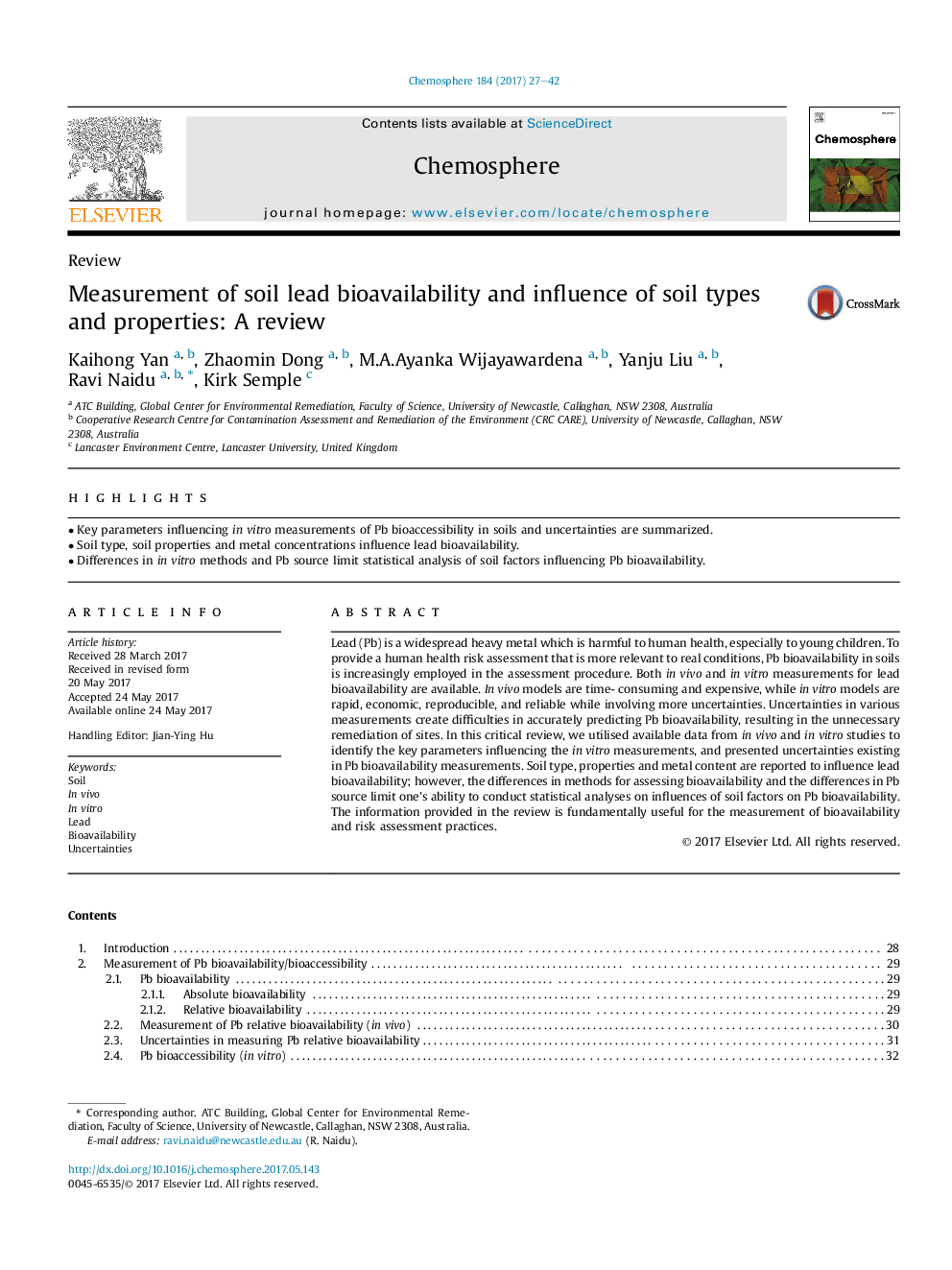| Article ID | Journal | Published Year | Pages | File Type |
|---|---|---|---|---|
| 5746246 | Chemosphere | 2017 | 16 Pages |
â¢Key parameters influencing in vitro measurements of Pb bioaccessibility in soils and uncertainties are summarized.â¢Soil type, soil properties and metal concentrations influence lead bioavailability.â¢Differences in in vitro methods and Pb source limit statistical analysis of soil factors influencing Pb bioavailability.
Lead (Pb) is a widespread heavy metal which is harmful to human health, especially to young children. To provide a human health risk assessment that is more relevant to real conditions, Pb bioavailability in soils is increasingly employed in the assessment procedure. Both in vivo and in vitro measurements for lead bioavailability are available. In vivo models are time- consuming and expensive, while in vitro models are rapid, economic, reproducible, and reliable while involving more uncertainties. Uncertainties in various measurements create difficulties in accurately predicting Pb bioavailability, resulting in the unnecessary remediation of sites. In this critical review, we utilised available data from in vivo and in vitro studies to identify the key parameters influencing the in vitro measurements, and presented uncertainties existing in Pb bioavailability measurements. Soil type, properties and metal content are reported to influence lead bioavailability; however, the differences in methods for assessing bioavailability and the differences in Pb source limit one's ability to conduct statistical analyses on influences of soil factors on Pb bioavailability. The information provided in the review is fundamentally useful for the measurement of bioavailability and risk assessment practices.
